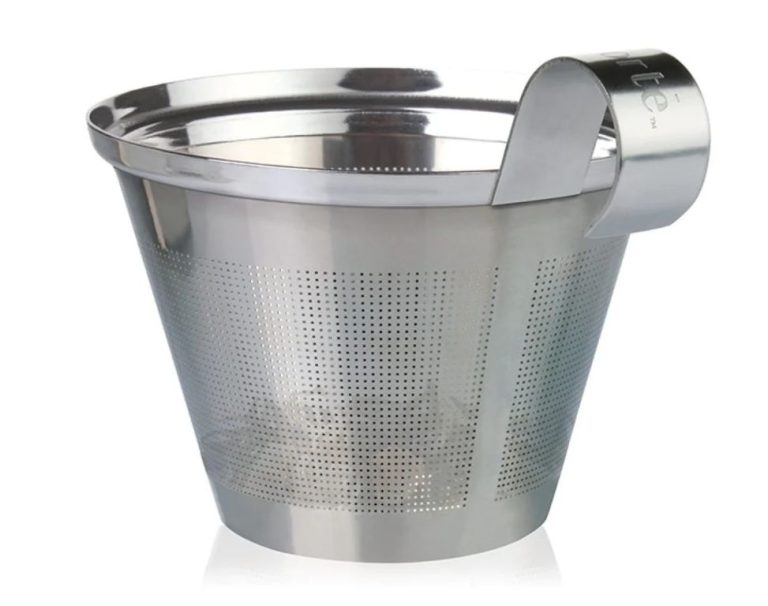What Is The Difference Between A Pyrometer And An Ir Gun?
Pyrometers and IR guns are both devices used to measure temperature without contact. Pyrometers measure the radiant energy emitted by an object to determine its temperature. IR guns use infrared thermography to measure surface temperature. While they serve a similar function of non-contact temperature measurement, there are some key differences between how pyrometers and IR guns work.
What is a Pyrometer?
A pyrometer is an instrument designed to measure high temperatures, especially those above the range of a conventional thermometer. The word pyrometer comes from the Greek words “pyr” meaning fire, and “metron” meaning measure.
Pyrometers have been in use since the 19th century. Early pyrometers relied on the expansion of materials like liquids, solids, or gases to indicate temperature changes. Modern pyrometers are based on the principle that all objects emit heat radiation, which can be correlated to the object’s temperature (Sunshine Slate).
Pyrometers work by detecting the intensity of infrared radiation emitted by an object. As temperature increases, the amount of infrared radiation emitted also increases. By measuring the infrared radiation, a pyrometer can determine the temperature of the object’s surface non-contactly without any interference. This makes them well-suited for measuring moving or inaccessible objects at very high temperatures.
Types of Pyrometers
Pyrometers can be broadly classified into optical pyrometers and infrared/radiation pyrometers according to their working principle. There are several different types within each category:
Optical Pyrometers:
– Brightness pyrometers – Compare the brightness of the hot object with an internal filament lamp. Simple and inexpensive but accuracy is limited.
– Disappearing filament optical pyrometer – User looks through eyepiece and adjusts current to filament lamp until it visually matches the brightness of the object. Provides good accuracy.
– Photoelectric optical pyrometers – Use a photodiode to compare light from filament to light from object, amplify the difference, and control current to filament for null balance. Very accurate and stable.
Infrared/Radiation Pyrometers:
– Infrared thermopile pyrometers – Measure infrared energy emitted from object using a thermopile sensor. Wide temperature range, accurate and fast response.
– Infrared photoelectric pyrometers – Use a photodiode sensitive to infrared wavelengths to measure emitted energy. High accuracy and fast response.
– Ratio pyrometers – Use two infrared sensors with different spectral responses to compensate for emissivity changes. Very accurate temperature measurement.
– Fiber optic pyrometers – Use fiber optic cable to transmit infrared radiation from object to infrared detector. Allows temperature measurement in difficult to access areas.
Overall, optical pyrometers use visible light measurement while infrared/radiation pyrometers use infrared energy measurement to determine temperature.
Applications of Pyrometers
Pyrometers are commonly used for temperature measurement in industrial processes where non-contact temperature measurement is required. Some of the key applications in manufacturing and metalworking include:
In the metals industry, pyrometers are used for monitoring temperature in furnaces, ovens and kilns during processes like annealing, hardening and tempering of metals. They allow operators to precisely control temperature profiles to achieve desired material properties (https://www.limab.co.uk/product-category/pyrometers-products/metal-applications-pyrometers/).
Pyrometers are also used to measure temperature in molten metals, allowing process control during operations like smelting, casting, rolling and extrusion. This helps improve product quality and prevent overheating damage to equipment.
In glassmaking, pyrometers monitor temperatures inside furnaces during processes like annealing and tempering of glass. Precise temperature control prevents defects and allows achieving the desired glass properties.
Pyrometers are also commonly used in the ceramics industry for firing kilns and monitoring ceramic fabrication processes. They allow optimizing heating profiles to achieve the desired material strengths and properties.
What is an IR Gun?
An IR gun, also known as an infrared thermometer, is a device that measures the surface temperature of an object without making physical contact. IR guns detect infrared energy emitted from an object and convert it into an electrical signal that can be displayed as a temperature reading (1).
IR guns were first developed in the 1960s and initially used for industrial applications. They became more compact and affordable in the 1990s, allowing wider commercial and consumer use. Today, infrared thermometers are common tools in various fields including HVAC, automotive repair, food service, and manufacturing (2).
Like pyrometers, IR guns are non-contact thermometers that can measure temperature from a distance. However, unlike pyrometers that measure a small target area, IR guns have a larger field of view and can scan a wider surface area. IR guns work by detecting the infrared radiation emitted by an object. All objects above absolute zero emit radiation as a function of their temperature. An IR gun collects this radiation through an infrared detector, focuses it using lens optics, and converts it to an electrical signal to display a temperature reading (3).
Some key references:
(1) https://www.flir.com/discover/professional-tools/infrared-thermometers-101/
(2) https://www.omega.com/en-us/resources/infrared-temperature-measurement-theory-application
(3) https://www.omega.com/en-us/resources/infrared-thermometer-how-work
Differences from Pyrometers
IR guns differ from pyrometers in several key ways: [1]
First, IR guns are handheld and portable, whereas pyrometers are typically stationary instruments. This allows IR guns to be easily moved around and pointed at different objects to take measurements. Pyrometers require the object being measured to be brought to the pyrometer.
Second, IR guns tend to have lower accuracy and precision compared to pyrometers. Pyrometers can measure temperature more exactly, while IR guns provide a more general temperature range. This makes pyrometers better suited for applications requiring high precision.
Third, IR guns use infrared thermopiles or photodiodes to detect radiation in the infrared spectrum and infer temperature at a distance. Pyrometers use thermocouples or other sensors in direct contact with the object to precisely measure temperature.
Finally, IR guns are simpler and cheaper devices, while pyrometers are more complex scientific instruments. IR guns are convenient for spot measurements, while pyrometers excel at continuous temperature monitoring and control.
Types of IR Guns
There are several types of IR guns that are designed for different applications and measurement needs:
Single Laser IR Guns
Single laser IR guns project one laser point onto the target surface for aiming purposes. The laser converges with the IR sensor to ensure accurate temperature measurements at a precise spot on the surface. Single laser IR guns are best for spot measurements of small or distant targets [1].
Dual Laser IR Guns
Dual laser IR guns project two laser points that converge at a set distance. This allows the IR sensor to calculate the size of the measurement area based on the distance to the target. Dual laser guns are good for scanning larger areas or when the distance to the target varies [1].
Thermocouple IR Guns
Thermocouple IR guns combine a thermocouple probe with an IR sensor. The probe makes direct contract temperature measurements, while the IR sensor measures surface temperatures without contact. Thermocouple IR guns provide the flexibility to measure temperatures in different ways [2].
Smartphone IR Guns
Some IR gun manufacturers make models designed to connect to smartphones via Bluetooth. This allows temperature data to be logged and analyzed on a phone app. Smartphone IR guns add connectivity and data capturing capabilities [3].
Applications of IR Guns
IR guns have many practical uses in everyday life and industry. Some of the most common applications include:
-
HVAC – IR guns allow HVAC technicians to quickly scan equipment like air handlers, ductwork, and vents for hot or cold spots that indicate airflow problems or leaks.
-
Cooking – Chefs use IR thermometers to check food temperatures and ensure proper cooking without over or under-cooking. They can instantly read the temperature of grills, ovens, deep fryers, etc.
-
Automotive – Mechanics use IR guns to troubleshoot overheating issues by scanning engine parts like radiators, hoses, cylinders, etc. They can also check tire temperatures for potential problems.
-
Electrical – Electricians use IR thermometers to scan breaker boxes, outlets, and wiring for hot spots that indicate problems like shorts or overloads.
IR thermometers provide fast, non-contact surface temperature measurements for troubleshooting and quality control across many everyday applications. Their portability, ease of use, and instant readings make them a versatile tool for residential and commercial use.
Pros and Cons Comparison
Pyrometers and IR guns both have their own unique advantages and disadvantages. Here is a summary comparing the two devices:
| Pros | Pyrometer | IR Gun |
|---|---|---|
| Accuracy | Very accurate for measuring high temperatures, within ±0.3% of reading | Reasonable accuracy for general troubleshooting, within ±2% of reading or ±2°C |
| Temperature Range | Measures very high temps up to 3000°C depending on model | Typically max temperature around 500°C |
| Distance-to-Spot Ratio | Can measure small targets from far away up to 70:1 ratio | Short distance-to-spot ratio around 12:1 |
| Field of View | Narrow measurement spot | Wider field of view |
| Cost | More expensive, over $100 typically | Very affordable, often under $50 |
| Cons | Pyrometer | IR Gun |
|---|---|---|
| Temperature Range | Not designed for ambient or human body temperatures | Lower maximum temperature |
| Ease of Use | More complicated with multiple settings | Very simple point and shoot |
| Portability | Can be bulky for some models | Lightweight and handheld |
| Field of View | Harder to hit small/moving targets | Not as precise measurement spot |
| Cost | More expensive | Very budget friendly |
Conclusion
In summary, the main differences between pyrometers and IR guns are that pyrometers measure temperature from a distance using thermal radiation, while IR guns need to be in close contact with the object to measure surface temperature.
Pyrometers are better suited for very high temperature measurements above the range of IR guns, measurements through flames or windows, and monitoring temperatures in hazardous environments from a safe distance. IR guns are better for spot measurements of hot surfaces that can be accessed safely and directly.
So in applications like industrial furnaces and boilers, pyrometers are the better choice for continuous temperature monitoring. But for electrical inspections, cooking, HVAC work, and automotive applications, handheld IR guns provide a more portable, flexible, and economical solution.





